Oxted is a parish and small village situated 3 miles East of Godstone and 10 miles southeast of Croydon. It comprises about 3627 acres and had a population, in 1851, of 1064 persons. This had grown by 1892 to 1499.
THE BELL High Street. Situated 50 yards from the George, and 75 yards from the Crown. In “Oxted Explored” published by the Tandridge DC it is said that the Old Bell was late 15th century or early 16th, but the plan is not of the usual domestic pattern. As there is some uncertainty about the original purpose, there is a strong possibility that it was already an Inn.
SRO 337/4/83 has an abstract from the “Old Bell” and this shows that on 27th March 1738 William Rogers of Bletchingley bought a messuage known as Wallers in the parish of “Qxstead”. This had a barn and other buildings belonging, 2 acres with the barn being in occupation of Widow Wickham. Three years later in 1741, the four messuages of Wallers was sold to John Clements of Nutfield for £400. He opened an Inn there, since on 13th April 1774 he sold to William Field (a Sanderstead blacksmith) “Three messuages (formerly 4), one whereof (being two of the former four converted into one) was called by the name of the Queen’s Head.” For this, Field paid £290 (SRO 337/4/84)
THE BELL High Street. Situated 50 yards from the George, and 75 yards from the Crown. In “Oxted Explored” published by the Tandridge DC it is said that the Old Bell was late 15th century or early 16th, but the plan is not of the usual domestic pattern. As there is some uncertainty about the original purpose, there is a strong possibility that it was already an Inn.
SRO 337/4/83 has an abstract from the “Old Bell” and this shows that on 27th March 1738 William Rogers of Bletchingley bought a messuage known as Wallers in the parish of “Qxstead”. This had a barn and other buildings belonging, 2 acres with the barn being in occupation of Widow Wickham. Three years later in 1741, the four messuages of Wallers was sold to John Clements of Nutfield for £400. He opened an Inn there, since on 13th April 1774 he sold to William Field (a Sanderstead blacksmith) “Three messuages (formerly 4), one whereof (being two of the former four converted into one) was called by the name of the Queen’s Head.” For this, Field paid £290 (SRO 337/4/84)
It was on 2nd March 1792 that William Field sold “all those three several messuages formerly four of which one was the Queen’s Head” to John Whickham of Battersea, newsman, who was possibly his step-son or son-in-law (SRO 337/4/86-7). During the latter’s ownership, the name was altered to the “Five Bells”, for on 5th December 1804 he sold to Richard Cooper of Tottenham, “All that messuage with cottage adjoining, that which was known as the Queen’s Head, but for some time past has been known as the Five Bells.” There was no doubt a link with the parish church here, for it had a peal of five bells.
Although not shown in the Kingston deeds, this was taken over by Anthony Harman, for after his death in 1845, the Five Bells with two cottages attached were transferred (in 1849) to Nalder & Collyers, brewers of Croydon. This brought it a changed name, for when Howard Nalder became sole owner of the Croydon brewery in 1872, the “Bell”, formerly the “Five Bells” with two cottages were transferred to him. (SRO 337/1/86). It remained the Bell until well into this century, but in 1936 it was the “Old Bell” that Nalders retained until it was finally sold off.
The sign depicts a bell and a church with a spire – not the massive squat tower of the psrish church with which its name once had a connection. In 1923, the church added a sixth bell – could the name change date from this time?
In 1892 it was run by James Browning as successor to Robert Cockrell who appeared in the 1859 directory and who was also described as a builder. The inn served the labouring classes.
_____________________________________________________________________
CHALK PIT Situated 1½ miles from the Bell and a similar distance from the George. In 1892 it was listed as an off-licenced beerhouse owned by Charles Hoskins Master, brewer of Guildford and run by Thomas Wales. It eventually became tied to the Friary Brewery Co. Frequented by cottagers.
____________________________________________________________________
THE CROWN & ANCHOR, High Street, Oxted. Situated 25 yards from the George and 50 yards from the Wheatsheaf. The Building is 17th century or earlier. It was acquired in 1894 by B C Bushell brewer of Westerham. Indentures and a lease & release dated 20/21 March 1837 were held by Bushells as proof of title, it was described that the latter release was made between George Roberts of Oxted, shopkeeper, and among others, George Peters Prince of Holloway, gent, and Sarah Elizabeth, his wife, whom the latter gentleman married on 17th October 1827. The Crown was acquired by Prince from Roberts for £550. In 1859 the licensee was William Worsell, who was also described as a bricklayer. In 1892 it was a freehouse owned by George Peters Price of Surbiton and run by John Cowdray. It was frequented by tradesmen and working classes.
____________________________________________________________________
THE GEORGE INN High Street, Oxted. Situated 50 yards from the Bell and about 25 yards from the Crown. The building dates from the 16th century or earlier, with other parts from the 18th century. It was formerly called the Dane & Antelope. In 1859 it was run by James Prickler but by 1892 the licensee had changed to Richard John Segar. It was owned by Crowley,brewers of Croydon and frequented by Labouring classes.
___________________________________________________________________-
THE HAYCUTTER, Broadham Green. Situated 1 mile from the Bell Inn, and a similar distance from the George. In 1892 it was owned by Bushell & Co, brewers of Westerham and run by David Longley. The inn was frequented by labouring classes.
_____________________________________________________________________
THE HAYWAIN, Snelling’s Corner, Oxted. The site was bought by Shelley Cowdray who demolished the existing buildings and erected a road house called the Haywain. The license was refused on the grounds that there were already 4 inns within 300 yards of it, so instead it was used as an unlicensed roadhouse, selling pop, teas, coffees, etc. It carried the nickname locally as Snellings Folly. Used before the war and taken over by the electricity council as offices. Now demolished and rebuilt. First taken by Mazda Car Co as offices and now a timber importers.
_____________________________________________________________________
HOSKINS ARMS, Station Road, Oxted. Situated about ½ mile from both the Crown and the Wheatsheaf. Owned in 1892 by Charles Hoskins Masters, brewer of Guildford after whom presumably it is named Tied to Friary Brewery Co of Guildford later. The licensee was Thomas Tucker and the inn was frequented by railway travellers and others.
_____________________________________________________________________
NEW HOLLAND, Oxted. Situated 1 mile from the Royal Oak Inn and 2 miles from the Haycutter. An off-licensed beerhouse owned in 1892 by George Baker of Oxted and run by George Webb. A suggestion has been made that this was once known as the Diamond, but I have not seen any documentary evidence to support this. Page & Overton’s Brewery, Croydon appeared to have a connection.
_____________________________________________________________________
ROYAL OAK, Staffords Wood (Merle Common). Situated 1½ miles from Webb’s beerhouse, and about 2½ miles from the Haycutter Inn. In 1892 was owned and run by Henry Brown of Oxted as a free house in succession to his forbear William Brown. Lists give the address as Merle Common, and his trade is also given as “sieve-maker”. The inn was frequented mainly by labouring classes.
____________________________________________________________________
THE WHEATSHEAF, High Street, Oxted. Situated about 50 yards from the Crown and 75 yards from the George. Deeds are continuous back to 1830, but obviously go back a great deal further. The earliest I have seen is dated 1st December 1830; another dated 18th November 1848 is a conveyance from John to William Searle; a further deed dated 14th April 1862, is also a conveyance, but from the Trustees of the will of William Searle deceased, to George Simmonds. Finally, there is one dated 29th Sept 1864 from George Simminds to Messrs Martin & Bushell. In 1892 it is listed as a beerhouse in the possession of Bushell & co, brewers of Westerham and run by William George Church. Frequented by labouring classes.
____________________________________________________________________




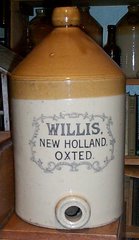


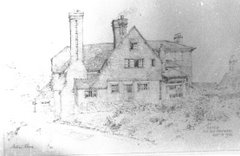

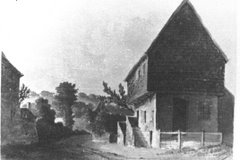
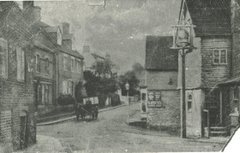
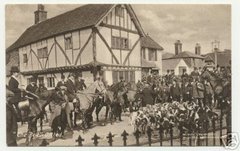
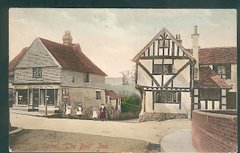
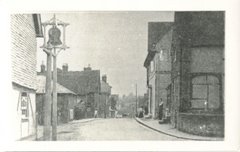
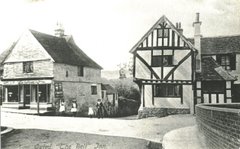
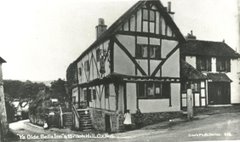
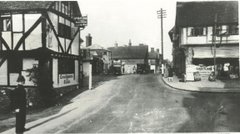
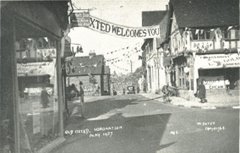
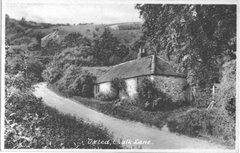
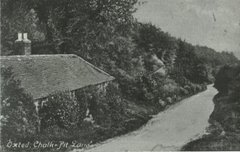
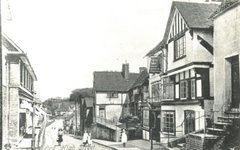
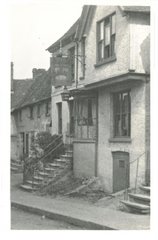
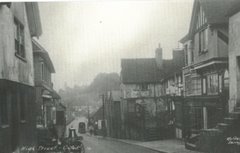
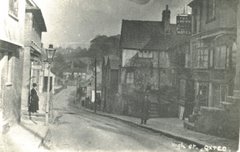
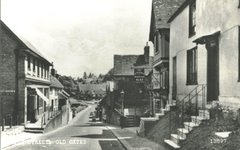
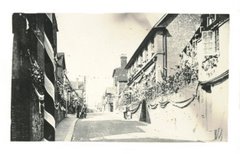


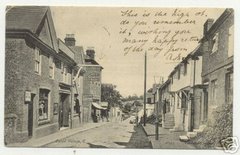
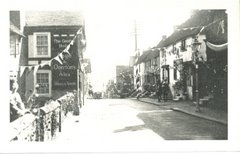
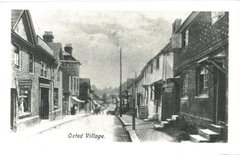
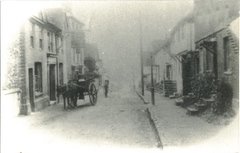
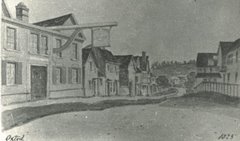
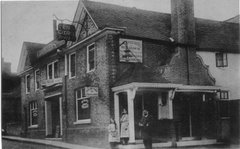

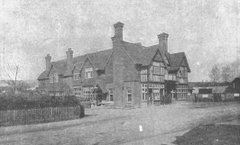
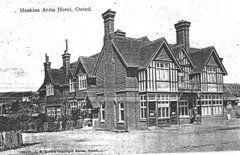
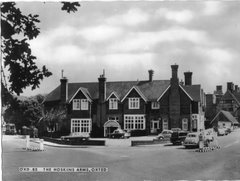
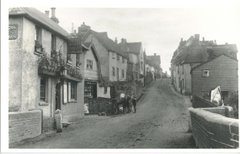
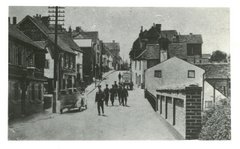


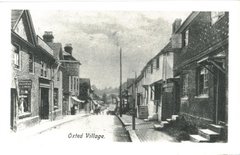
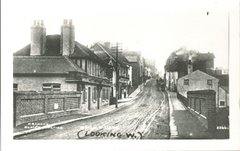
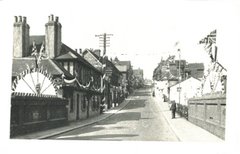
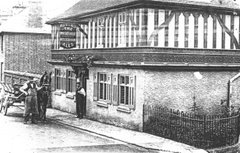

1 comment:
I am very interested in contacting the author of this message. I believe the Edward Nash who died in 1798 mentioned is my 4th Great Grandfather. I would very much like to know the sources of all the information about him and anything further about his occupation as a Malster.
Post a Comment